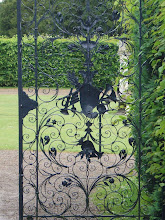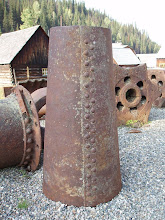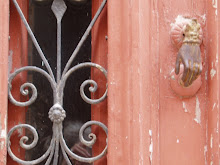
I have been interested in the idea of etching silver for a couple of years now and finally this week I actually did it. So for anyone interested in the technique here's how I went about it, bearing in mind that at this stage I have etched exactly four pieces of silver!
My experience with etching has been limited to etching copper and brass with Ferric Chloride. The chemical that I was interested in using on silver is Ferric Nitrate. The traditional chemical to etch silver has been nitric acid but Ferric Nitrate is safer to use and I have read that it gives a cleaner etch. First I had to source the Ferric Nitrate, with the help of google and a couple of emails to artists I found online I quickly had a source in British Columbia - xenexlabs .com. Surprisingly they shipped it to me through the regular mail, it was $78 for 500g, plus tax and shipping. The chemical comes as greyish-mauve crystals.
I contacted Ontario jeweller and metalsmith Sandra Noble Goss for some notes on dilution strength which she kindly emailed me back right away. It appears that you can alter the dilution of the crystals depending on how long you are prepared to wait for the metal to etch. Since I had bought 500g I decided to make up half of that and keep the rest of the crystals for another batch later on. I used a small tupperware container which 350ml of water filled nicely. I added my 250g Ferric Nitrate crystals to the water and stirred until they were dissolved - I used warm tap water. According to Sandra's notes I could have used a stronger solution or a weaker one (1:1 water to crystals or 2:1), I simply chose the proportions that best fit my container and the amount of crystals I had bought.
I prepared my silver the same way as one would prepare copper or brass for Ferric Chloride etching ie starting with clean metal, the design applied in PnP blue transfer paper, the back and sides taped off with packing tape. If you don't have the PnP paper you can use an oil-based paint pen to draw on the metal, however I would recommend PnP paper above anything else - enamelworksupply.com has it and many other places I am sure.
It is necessary to suspend the prepared metal in the Ferric Nitrate solution and it must be upside down so the residue can fall out. I taped fishing line to the back and then taped the lines to the edge of the tupperware container pulling it tight enough so the piece is submerged but not touching the bottom, then put the lid on. I got a very good etch in 4hrs at this strength of solution. When you take it out put the piece in a bowl of water with baking soda in it and rub more baking soda directly on the piece, scrub well. This will neutralize the Ferric Nitrate and clean off the greyish film. The PnP residue can be sanded off or removed with acetone. There, you should have a lovely piece of etched silver ready to make into something beautiful.
Safety First: wear an apron and gloves and safety glasses, don't get the solution on your skin or clothes. When making up the solution I worked under a fume hood to be on the safe side, while the etch was working I had a lid on the container. Always use baking soda to neutralize. The solution can be used over again - as I have only just started I don't know how long it will work for, eventually it will wear out. The best disposal recommendation would be taking it to a toxic waste specialist.
If you have already etched with Ferric Chloride these notes should be enough to help you start with Ferric Nitrate. If you have never etched I would recommend you see a demo first as written notes are really just an addition to watching it done. If you have questions though, I'll try and answer them. Also if you can get Linda Darty's book The Art of Enameling, she covers the process in there quite well.























